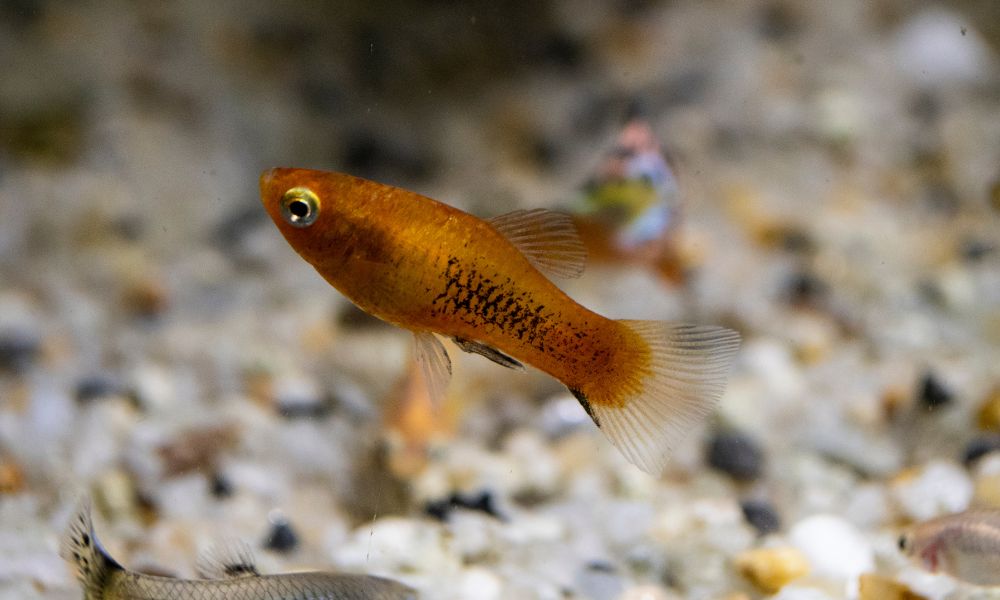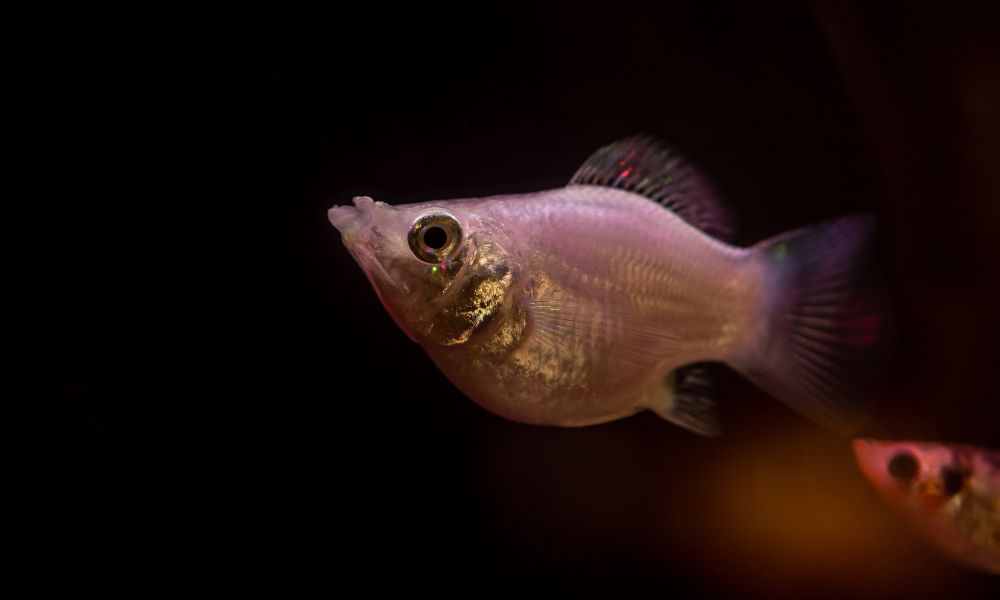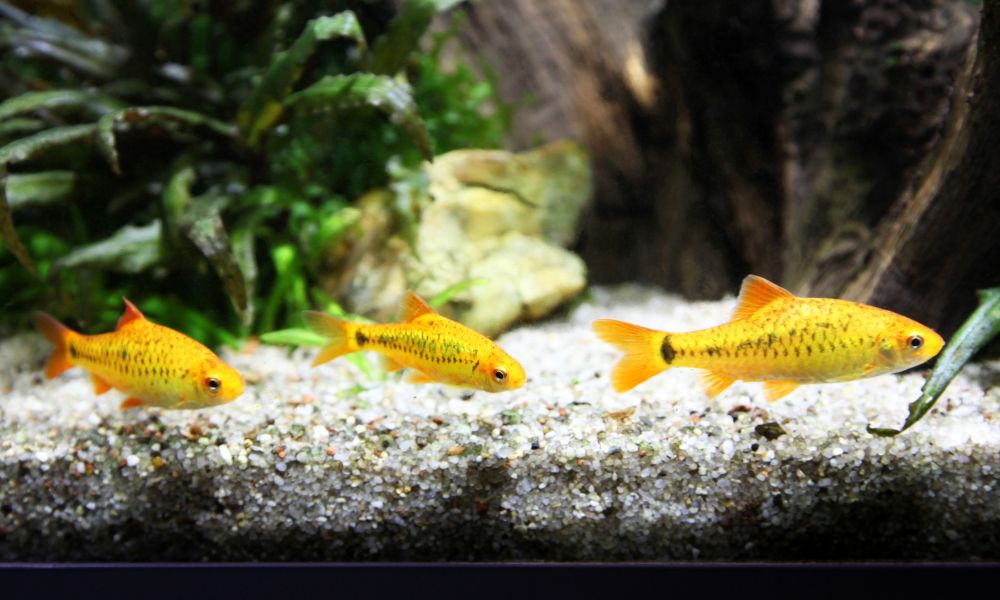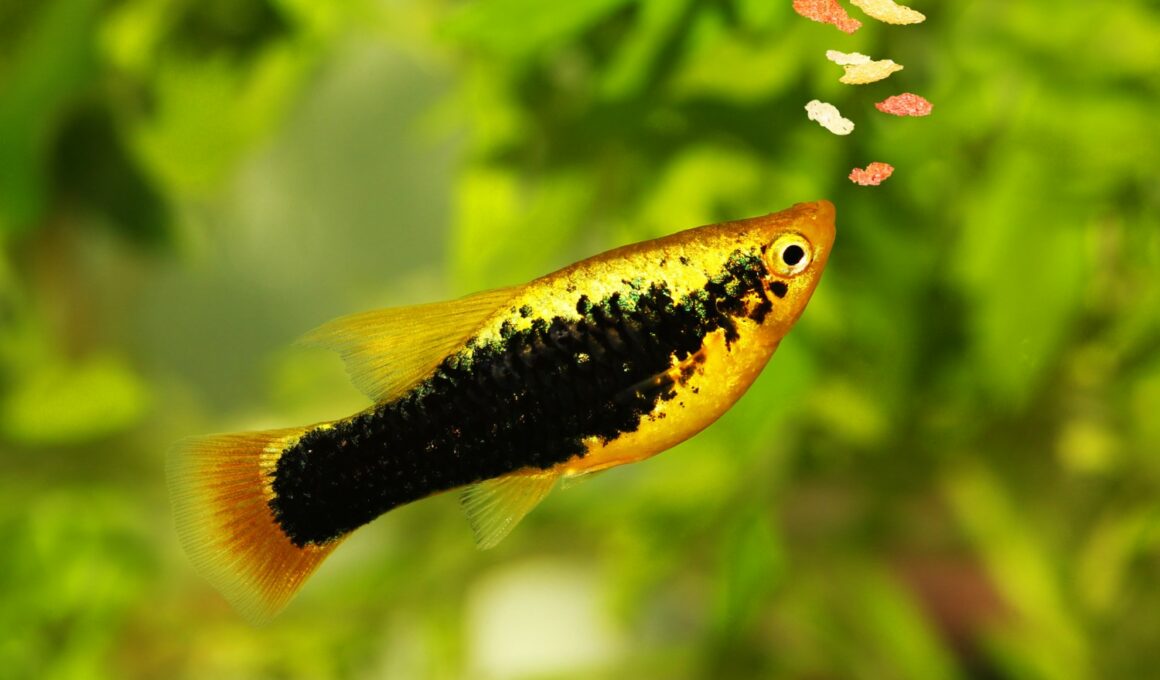In this article Show
If you’re diving into the colorful world of fish keeping, chances are you’ve come across the ever-charming platyfish. Popular for its vibrant colors and beginner-friendly nature, the platy is a staple in many home aquariums, and for good reason.
Having spent countless hours by my tanks, watching these little swimmers dart and play, I can attest to the sheer joy they bring. But, as with all fish, they thrive best when given the proper care.
Don’t worry, though! Caring for platies is straightforward once you grasp the basics. In this guide, I’ll walk you through the ins and outs of platyfish care – from setting up the ideal tank environment to ensuring they live a happy, healthy life.
Platyfish History and Background
Before we delve into the care specifics, it’s always good to understand a bit about the history and background of our finned friends. By knowing where they come from, we can better replicate their natural environment and meet their needs.
The platyfish, scientifically known as Xiphophorus, hails from Central America’s warm freshwater streams and ponds, primarily from Mexico to Guatemala. In these waters, they often swim amidst dense vegetation, enjoying both the shade and the protection it offers from predators.
Over the years, the popularity of the platyfish in home aquariums has led to various selective breeding processes. This has resulted in many colors and patterns, giving us varieties like the Xiphophorus maculatus and Xiphophorus variatus, to name a few.
Each variation is stunning in its own right, but they all share the same easy-going nature that makes them a favorite among fish enthusiasts. Their colors might be a tad muted in the wild compared to their vibrant aquarium-bred counterparts.
This is nature’s way of helping them blend into their surroundings and stay hidden from predators. But thanks to breeders, we now have platies in nearly every hue imaginable!

Tank Setup
Setting up a suitable tank for your platyfish is a blend of science and art. It’s not just about aesthetics; it’s about creating a habitat where they can thrive. Here’s how to get started:
1. Tank Size
At the very basic, for a small group of platyfish, you’d want to start with a 10-gallon tank. This gives them enough space to swim and interact.
If you’re planning on a community tank or want to house a larger group of platies, consider going bigger. Every additional platy should have an extra 2 to 3 gallons of water to ensure their well-being.
Platies are peaceful by nature, making them great tank mates with other non-aggressive species. If you’re looking to set up a community tank, ensure you account for the space needs of all fish.
2. Water Parameters
Platy fish thrive in temperatures between 70°F and 78°F (21°C to 26°C). Keeping the temperature stable is crucial, so investing in a reliable aquarium heater and thermometer is wise.
Platies prefer slightly alkaline water. Aim for a pH level between 7.0 to 8.0. They are also adaptable to various hardness levels, but a general hardness (GH) between 10-28 dGH is ideal.
3. Filtration
Clean water is paramount. A good filter helps remove waste, excess food, and toxins, ensuring your Platies have a clean environment.
Both hang-on-back (HOB) filters and sponge filters work well for platy tanks. Sponge filters are particularly beneficial for tanks with fry, as they prevent young ones from being sucked into the filter.
4. Substrate & Decorations
Sand or fine gravel works well for platies, mimicking their natural riverbed environment. Avoid sharp-edged substrates, which could injure your fish. Remember those dense vegetation in their natural habitat?
Try to emulate that with live or artificial plants. Plants like java moss, hornwort, and water wisteria are excellent choices. They not only provide hiding spots but also contribute to water quality. Throw in some caves or driftwood for added shelter and aesthetics.
Diet and Feeding
Feeding your platy fish the right diet is akin to having a balanced meal. Proper nutrition not only keeps them active and vibrant but also plays a pivotal role in their overall health and longevity. Let’s unravel the mysteries of the platy’s plate:
1. Dietary Needs
In the wild, platyfish are omnivores. They feast on small insects, larvae, algae, and plant matter. Their varied diet ensures they get a mix of protein, fiber, and essential nutrients.
In captivity, it’s our responsibility to mimic this balance. Providing a mix of plant-based and protein-rich food is the way to go.
2. Types of Food
Commercial Foods
High-quality flakes or pellets formulated for tropical fish are a great staple diet. These are usually enriched with essential vitamins and minerals. Ensure you pick a brand that lists real fish, shrimp, or algae as the first ingredients rather than fillers.
Live and Frozen Foods
To supplement their diet and provide variety, occasionally offer live or frozen foods. Brine shrimp, daphnia, and bloodworms are among their favorites. These treats are rich in protein and help simulate their natural feeding behavior.
Vegetables
Platies do enjoy a little green in their diet. Offer blanched spinach, lettuce, or zucchini slices once in a while. It aids in digestion and offers a break from their regular food.

3. Feeding Schedule
Feed your platy fish once or twice a day. But here’s the catch – only offer what they can consume within 2-3 minutes. Overfeeding can lead to water pollution and health issues.
Watch how your fish eat. If there’s food left after a few minutes, it’s a sign to reduce the quantity next time. On the flip side, if they gobble everything up instantly, a slight increase might be in order.
Lifespan and Health
The longevity and vitality of your platyfish are intrinsically linked to the care they receive. They can live a full and active life with proper attention to their environment and diet. Let’s dive into the specifics:
Average Lifespan
With good care, platyfish typically live in home aquariums for 2-3 years. However, some have been known to live up to 5 years when given exceptional care and under ideal conditions.
Common Health Issues
1. Ich (White Spot Disease)
This is a common ailment in which fish develop tiny white spots across their bodies and fins. A parasite causes it and can be treated with over-the-counter medications and by raising the water temperature slightly.
2. Fin Rot
If you notice the fins of your platy becoming ragged or discolored, they might be suffering from fin rot. Bacterial infections often cause it, and good water quality is the first line of defense. If the problem persists, consider anti-bacterial treatments.
3. Swim Bladder Disease
Platies swimming upside down or struggling to maintain their balance might be displaying symptoms of this disease. It can result from overfeeding or constipation. Feeding them boiled, deshelled peas can act as a mild laxative and aid recovery.
Preventative Care
1. Regular Water Changes
This cannot be stressed enough. Regularly replacing 20-25% of your tank’s water every week keeps toxins at bay and provides a cleaner environment.
2. Quarantine New Fish
Before introducing new fish to your main tank, keep them in a quarantine tank for a couple of weeks. This can help prevent potential disease outbreaks.

3. Avoid Stress
Just like us, fish get stressed too. Sudden changes in water temperature, aggressive tank mates, or a crowded environment can lead to stress, making them more susceptible to diseases.
Breeding and Reproduction
The process of breeding and witnessing the birth of new life in your aquarium can be one of the most rewarding experiences for a fish keeper. Platies, with their live-bearing nature, provide an especially unique opportunity. Let’s journey through the world of platy reproduction:
1. Sexual Dimorphism
Identifying male and female platies is fairly straightforward. Males are generally smaller with a modified, pointed anal fin known as a gonopodium. Females, on the other hand, are larger with a more rounded anal fin. Their body may also appear fuller, especially when gravid (carrying fry).
2. Breeding Process
While platies don’t require specific triggers to breed, optimizing conditions can help. A well-planted tank with plenty of hiding spots, a balanced diet, and clean water can encourage breeding behavior.
Once a male is interested, he’ll pursue a female and attempt to transfer sperm using his gonopodium. This process is quick, often appearing as a brief nudge or poke.
After successful mating, the female carries the fertilized eggs internally. In about 24-30 days, she’ll give birth to live fry. One fascinating thing about platies is their ability to store sperm. A single mating can lead to multiple batches of fry over several months.
3. Rearing Fry
When expecting fry, consider setting up a separate breeding tank or using breeding boxes to protect the young from potential predators, including their parents.
Fry have tiny mouths and require small foods. Infusoria, finely crushed fish flakes, or specialty fry foods are excellent choices. You can introduce them to baby brine shrimp or microworms as they grow.
With proper feeding and care, fry will grow rapidly. Once they’re large enough (typically a few weeks old) not to be seen as food by adult fish, you can introduce them to the main tank.
Conclusion
In the vast world of aquatics, platyfish stand out with their vibrant colors and easy-going nature.
By understanding their needs – from the right tank setup and diet to understanding their breeding habits – we can ensure these delightful fish live their best lives in our care. Remember, a happy platy is a colorful, active one.






